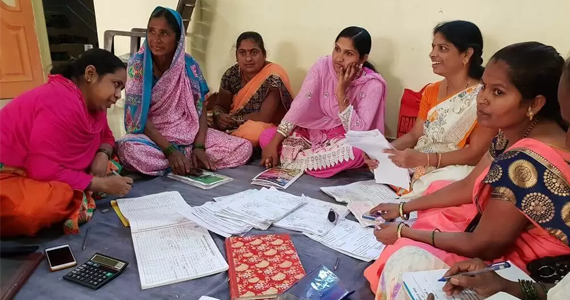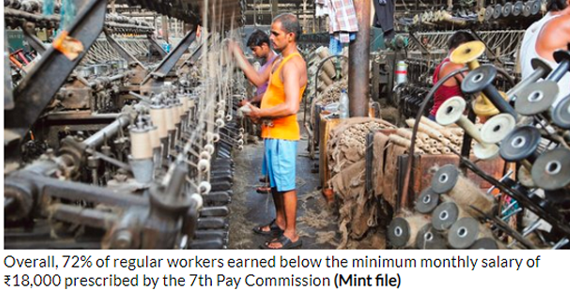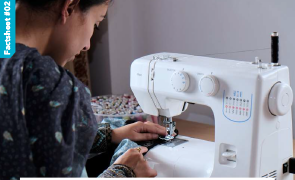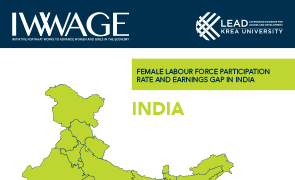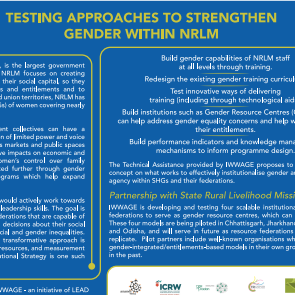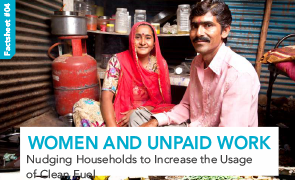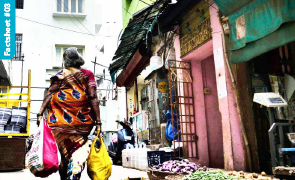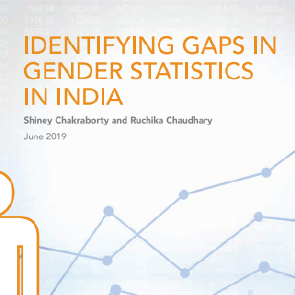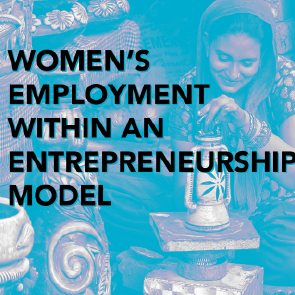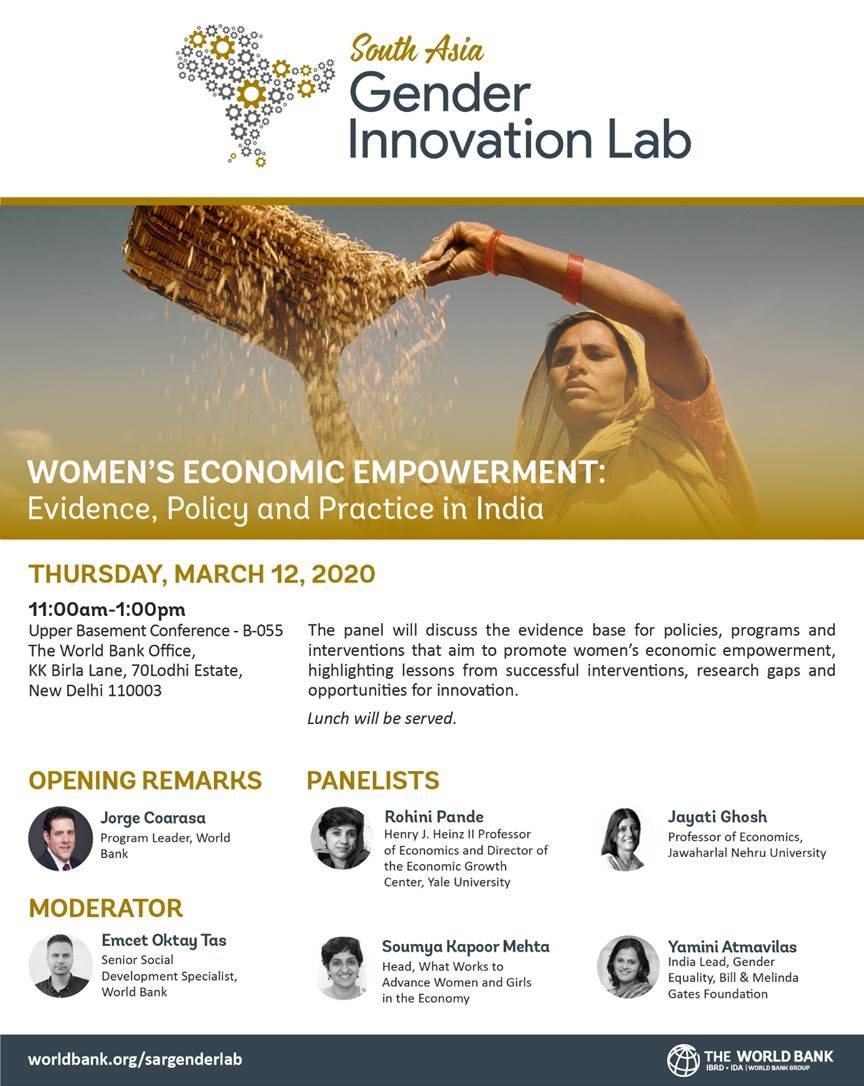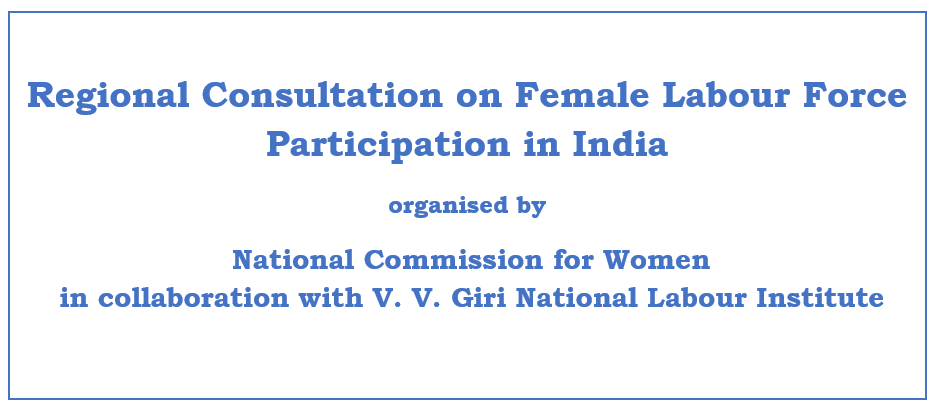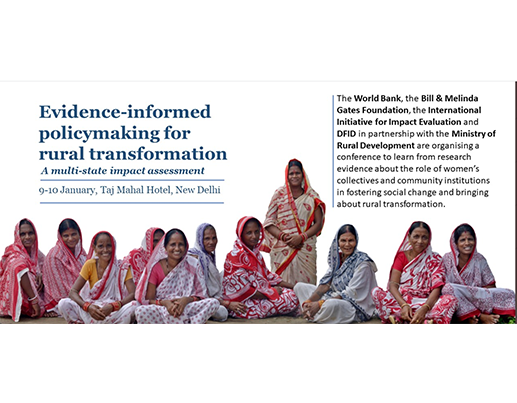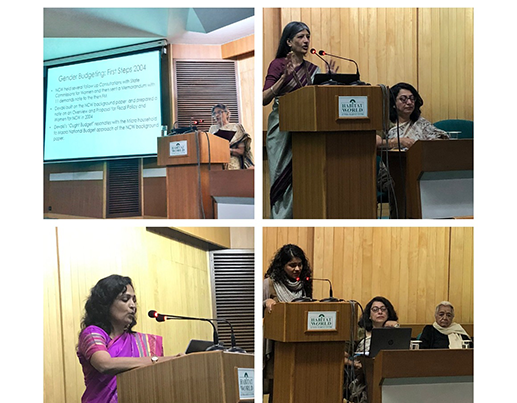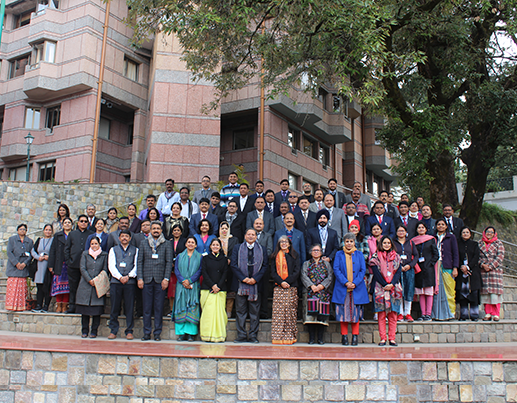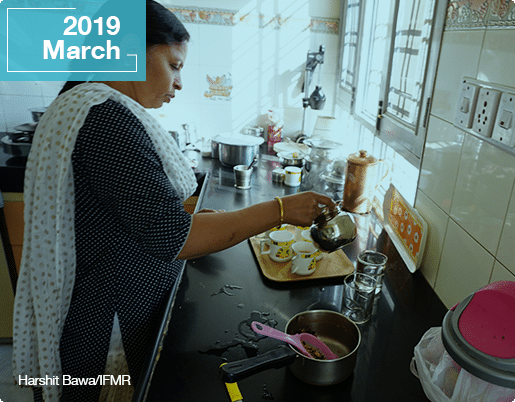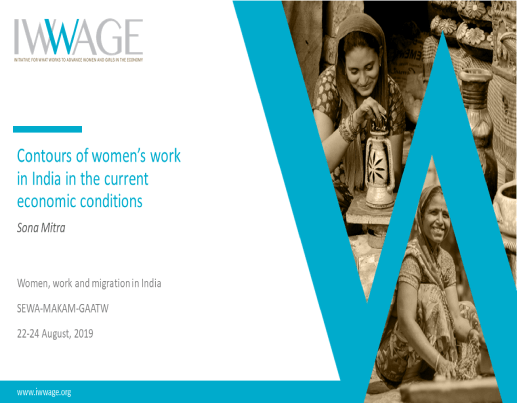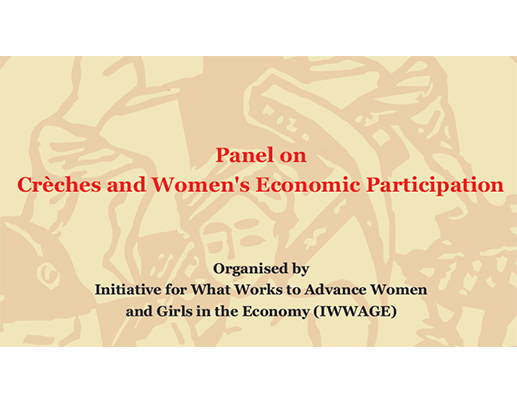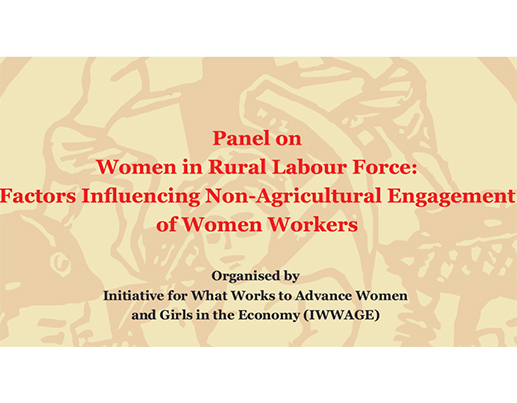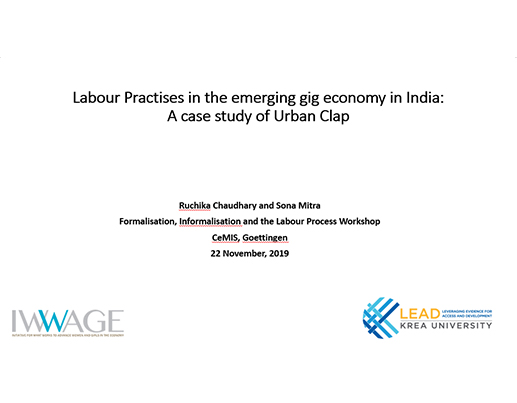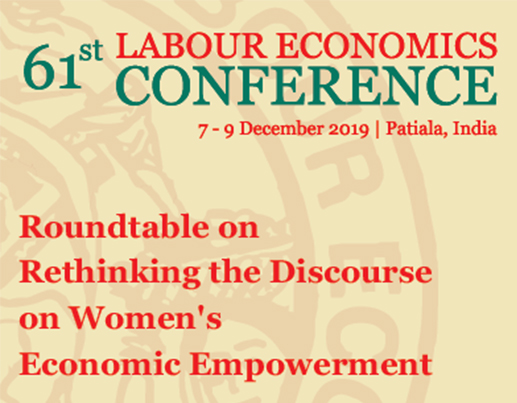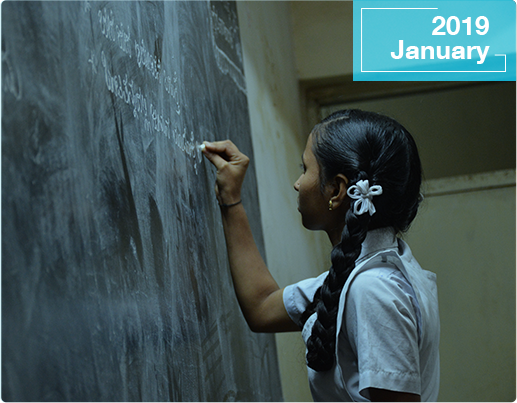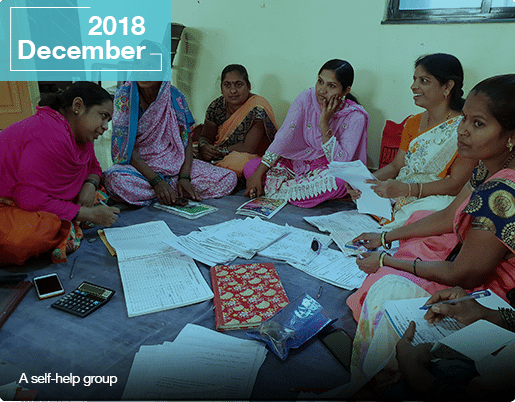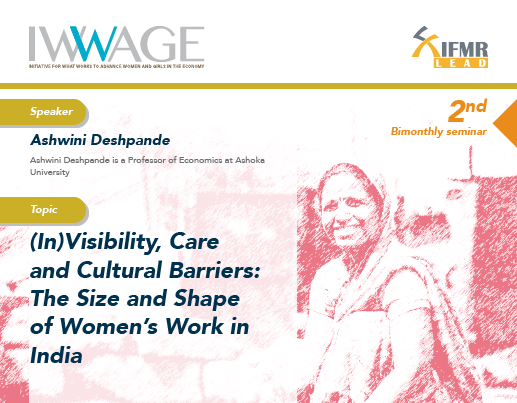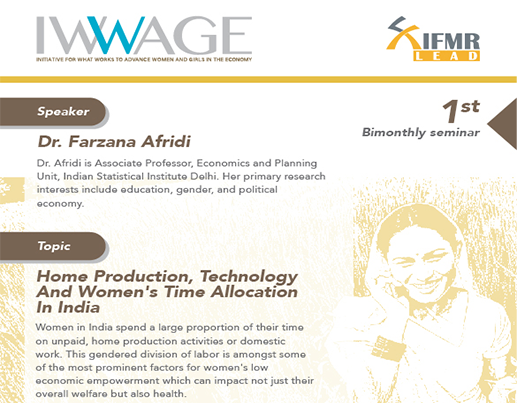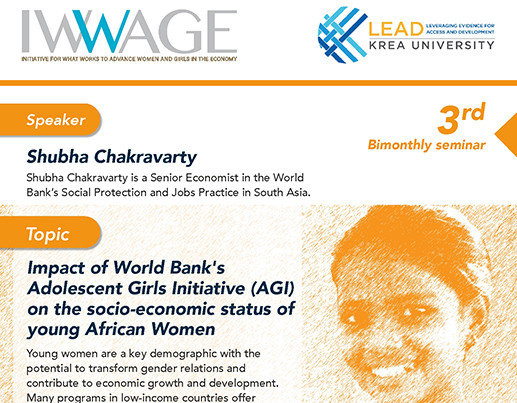Women’s work participation continues to decline: Evidence from the Periodic Labour Force Survey, 2017-18
The recently released Periodic Labour Force Survey (PLFS) – a new series of employment-unemployment estimates for 2017-18 produced by the NSSO that substituted the erstwhile Employment-Unemployment surveys (EUS) – clearly reveals that the declining trends in work participation rates of women continue to persist. Some of the PLFS estimates were available through a data leak in the media before the report was officially released by the government, and were mired in controversies of reliability as well as comparability with the previous EUS series. However, the recent release of the report by the government and deliberations on it by experts (such as Dr. Pronab Sen, former and the first Chief Statistician of India) clearly tell us two important facts: a) the headline indicators provided by the PLFS are comparable with the previous rounds of the EUS not only at the all-India level but also at the level of the states; and b) it follows that women’s work participation rates continue to decline for both rural and urban areas.
The report provides important trends on some of the important labour market indicators. Among the employment indicators, the one that attracted attention even before the report was officially released[1] was the unemployment rate – at 6.1 percent, this rate was at its highest since at least 1972–73 (when the NSS EUS was first conducted). The overall labour force participation rate[2] (LFPR) was just below 50 per cent in 2017-18, declining by about 14 percentage points from 2004-05.
Much has been discussed about the low and declining female labour force participation rate (FLFPR) in India, and multiple explanations advanced towards explaining this trend, such as increased education levels among women, rising household income (income effect), measurement issues (substantially higher proportion of women attending to domestic duties) and a general decline in the employment opportunities for women (Mehrotra and Sinha, 2017; Klasen and Pieters, 2015; Chaudhary and Verick, 2014; Kapsos et al., 2014; Lahoti and Swaminathan, 2013; Mazumdar and Neetha, 2011). As stated in the latest PLFS report, the trend has in fact worsened for rural women since 2011-12, with the FLFPR coming down to 25 percent in 2017-18[3], whereas for urban women, the rate has remained the same at about 20 percent (though most of the decline occurred between 2004-05 to 2009-10). But unemployment rate for urban women has substantially increased from 5 percent in 2011-12 to 11 percent in 2017-18 (Figure 1). Also, the labour force participation rate came down significantly for the (15-29) age group, relative to the other age cohorts. As is reported in the PLFS report, the decline was greater for young men compared to young women, which points to the prevailing job crisis in the Indian labour market, more so for educated young people.
Figure 1: Key labour market indicators for men and women across rural and urban areas, 15+ years, usual status (ps+ss), (2004-05 to 2017-18)
1.Labour force participation rate (%)
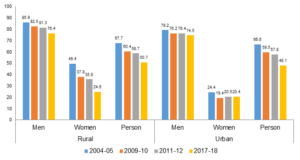
2. Workforce participation rate (%)
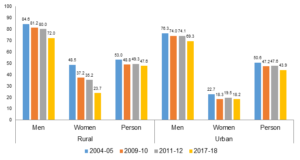
3. Unemployment rate (%)
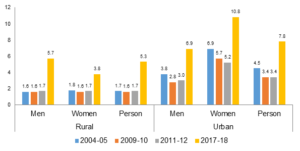
Source: PLFS Annual report, MoSPI, GoI, 2019
Note: ps: principal status; ss: subsidiary status
Additionally, rural women’s labour force participation rate declined by as much as 25 percentage points between 2004-05 and 2017-18. As a result, the rural FLFPR – which was double the urban FLFPR in 2004-05 – is now only a little higher than the urban FLFPR. What’s even more striking is that the FLFPR for young rural women aged (15 – 29) years has declined so sharply that it is now lower than the FLFPR for urban women in the same age group (Figure 2). The decline in FLFPR is mostly driven by rural areas, and therefore calls for a deeper analysis of the situation behind this trend.
Figure 2: Women’s labour force participation rate (%) by age cohorts
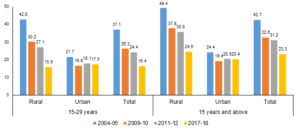
Source: PLFS Annual report, MoSPI, GoI, 2019
Apart from the disturbing trends outlined above, a positive development in women’s employment is seen in the case of regular salaried employment since 2011-12, as their proportion has increased significantly across both rural and urban areas, albeit more so in case of urban women (and very few women work as regular salaried workers in rural areas) (Figure 3).
Figure 3: Composition of the women workforce in rural and urban areas (%), all ages
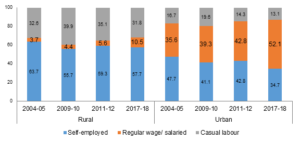
Source: PLFS Annual report, MoSPI, GoI, 2019
However as can be seen from Table 1, self-employment is massive for rural women (58 percent), followed by casual labour (32 percent) and regular salaried (10.5 percent). It is important to analyse the characteristics of rural self-employed women workers, as a majority of them work as contributing family workers/unpaid helpers in family enterprises (39 percent), compared to only 10 percent of the men (there are significantly higher proportions of own-account workers and employers among men, across both rural and urban areas). These unpaid family workers contribute to the production economy without receiving any income/wages in return, and are more likely to lack decent working conditions, adequate social protection, and formal work arrangements. Therefore, this puts women in vulnerable situations, and has larger implications for reducing gender inequality.
Table 1: Percentage distribution of workers by status in employment, usual status, all ages, 2017-18
| Category | Rural | Urban | ||
| Men | Women | Men | Women | |
| Own-account worker and employer | 48.0 | 19.0 | 34.9 | 23.7 |
| Helper in household enterprise | 9.8 | 38.7 | 4.3 | 11.0 |
| All self-employed | 57.8 | 57.7 | 39.2 | 34.7 |
| Regular wage salaried | 14.0 | 10.5 | 45.7 | 52.1 |
| Casual labour | 28.2 | 31.8 | 15.1 | 13.2 |
| Total | 100.0 | 100.0 | 100.0 | 100.0 |
Source: PLFS Annual report, MoSPI, GoI, 2019
Besides, if we look at the industrial distribution of women workers across rural and urban areas, it would highlight the importance of manufacturing and other services sector (namely, financial, insurance and real estate activities, health and education, and other services) (Table 2). This latter category includes domestic workers (maids, cooks, babysitters, and so on), women in beauty and wellness service activities, and workers in call centres. But domestic work is one segment which grew relatively faster over the last two decades, due to increased demand from middle-income families in the urban areas. These domestic workers are mostly uneducated or less educated migrants from poor rural areas, and in most cases their working and living conditions are alarming.
Table 2: Industrial distribution of women workers across location (%), usual status, all ages
| Category | EUS 68th (2011-12) | PLFS (2017-18) | ||
| Rural | Urban | Rural | Urban | |
| Agriculture | 74.9 | 10.9 | 73.2 | 9.1 |
| Mining & quarrying | 0.3 | 0.3 | 0.2 | 0.2 |
| Manufacturing | 9.8 | 28.7 | 8.1 | 25.2 |
| Electricity, water, etc. | 0.1 | 1.0 | 0.0 | 0.6 |
| Construction | 6.6 | 4.0 | 5.3 | 4.1 |
| Trade, hotel & restaurant | 3.0 | 12.8 | 4.0 | 13.0 |
| Transport, storage & communications | 0.2 | 2.7 | 0.3 | 3.3 |
| Other services | 5.2 | 39.6 | 8.9 | 44.4 |
| Total | 100.0 | 100.0 | 100.0 | 100.0 |
Source: PLFS Annual report, MoSPI, GoI, 2019
Furthermore, since more than 90 per cent of workers in India are informally employed, and its critical to assess the different components which are indicative of this phenomenon. If we examine the different dimensions of informality, we notice that the proportions of regular wage/salaried women who did not have any written contract has increased since 2011-12 (67 percent in 2017-18, compared to 65 percent in 2011-12). And the situation is more alarming in case of urban women, of whom more than 70 percent did not have a written job contract in 2017-18. Moreover, half of the total non-agricultural regular salaried workforce did not have any social security benefits (55 percent of rural women and 50 percent of urban women) in 2017-18. This raises concerns over the quality of regular work that is being created and thus the increases mentioned previously, in this category needs to be viewed with caution.
The PLFS clearly shows that fewer women are participating in paid market activities, and even when they do join the labour market, they end up in informal jobs, working mostly as unpaid family workers, or as regular salaried workers without job security or social security. Policies should be framed based on the emerging trends and focusing on the overall employment crisis. They should be able to address the constraints faced by women, and enable women to participate in the labour market in large numbers, and particularly in formal productive employment which gets them decent livelihood opportunities.
[1] https://www.business-standard.com/article/economy-policy/unemployment-rate-at-five-decade-high-of-6-1-in-2017-18-nsso-survey-119013100053_1.html
[2] People who are recorded as either ‘working’ or ‘seeking or available for work’ comprise the labour force.
[3] It is surprising to note that the proportion of women attending to domestic duties and allied activities also came down in 2017-18, relative to previous NSS rounds. This requires detailed analysis as the increased proportion of women in this category was cited as one of the reasons for the earlier decline in their participation rates.


